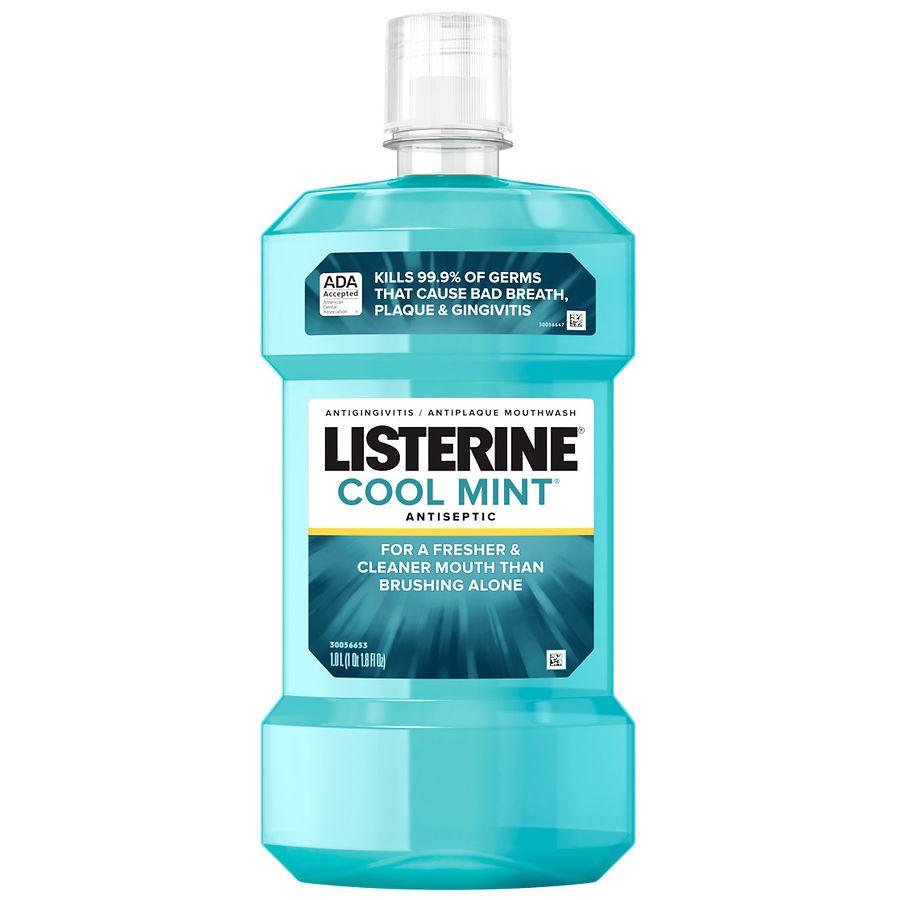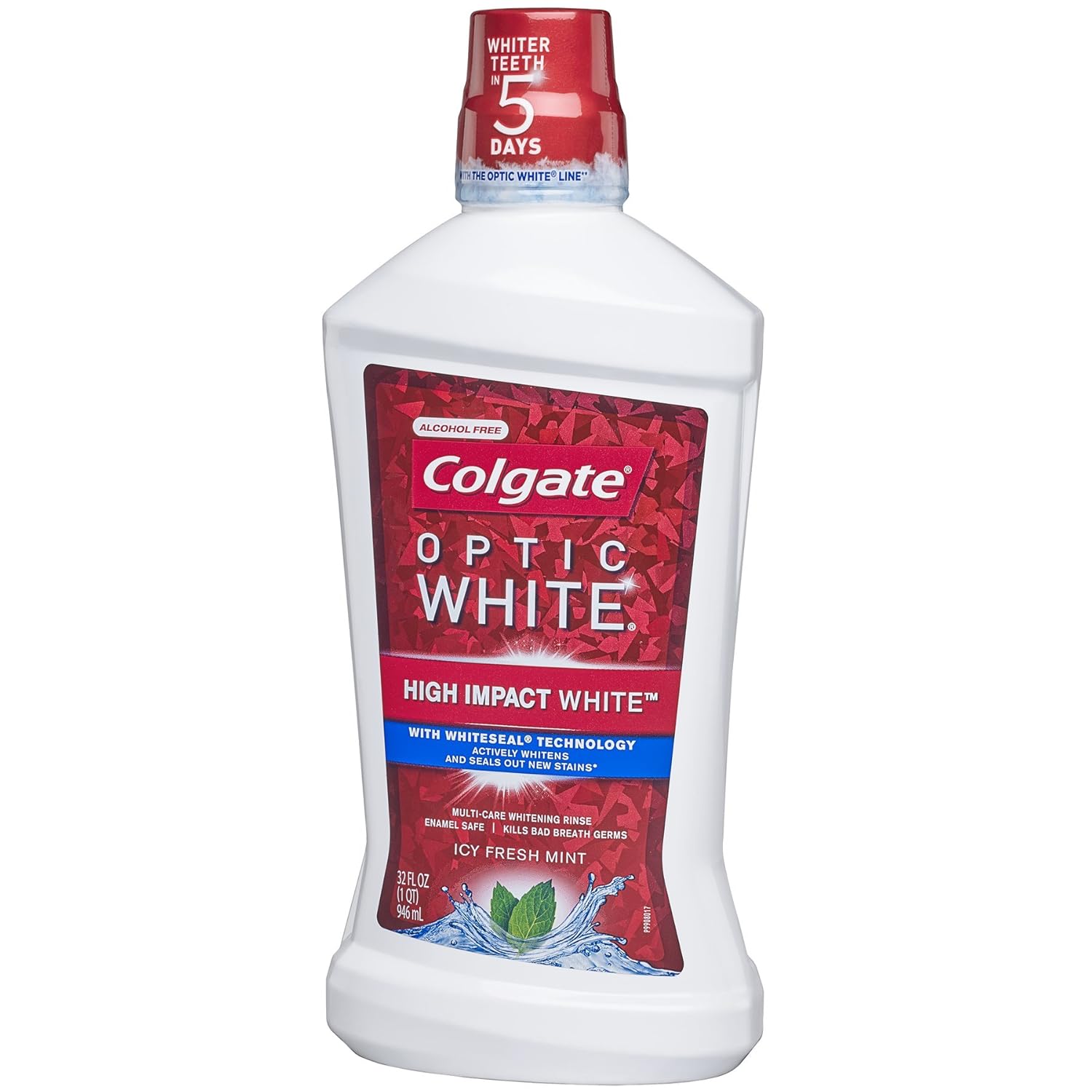What Brand of Mouthwash Gets Rid of the Most Bacteria in your Mouth?
Listerine Cool Mint and Colgate Optic White
- Sorbitol Solution: Sorbitol is a stable sugar alcohol that’s used as a sweetening agent in food products (frozen desserts, chewing gum, etc). It is non-cariogenic, meaning that it is not broken down by oral bacteria that breaks down sugar and starch to release acids that may lead to cavities or erosion of tooth enamel. Can also be a laxative.
- Molecular Formula: (C6H14O6)
- Environmental/Personal Safety: N/A
Crest Pro Health and Listerine Cool Mint
- Poloxamer 407: Poloxamer 407 solubilise the oily ingredients in the mouthwash since they are hydrophilic non-ionic surfactants which allows oil and water to mix. They are used as defoaming agents, wetting agents, emulsifiers [a substance that stabilizes an emulsion which is a mixture of 2 liquids that would not normally mix], and even safe to use in food
- Molecular Formula: (C5H10O2)
- Environmental/Personal Safety: Can cause high cholesterol {when given to mice, it coated cells in the liver that control cholesterol levels}
Colgate Optic White and Crest Pro Health
- Glycerin: Another name for Glycerol. Glycerin is a non-toxic odorless and colorless liquid that is slightly sweet-tasting. In oral care products like mouthwash, it adds body and consistency and prevents our mouth from drying out. Plus Glycerin can leave a pleasant feeling in our mouth and contribute to a flavor-extending effect. Alternatives includes sorbitol and propanediol.
- Molecular Formula: (C3H8O3)
Environmental/Personal Safety: If applied to teeth long enough, it can affect the micro-hardness of teeth enamel
Procedure:
1. Wake up and eat breakfast
2. Swab mouth with Q-Tip to get the bacteria after eating breakfast and before using the Listerine Cool Mint mouthwash
3. Brush teeth
4. Use mouthwash
5. Swab mouth to get bacteria after using the Listerine Cool Mint mouthwash
6. Repeat steps 1-5 for Crest Pro-Health and Colgate Optic White Mouthwashes




Results
Crest Pro Health Before & After
Listerine Cool Mint Before & After
Colgate Optic White Before & After
Did we do something wrong???This do not look right...
After conducting each trial for each mouthwash and observing them, one can conclude that mouthwash leaves more bacteria in our mouths than what was there before. That can be correct and incorrect. The noticeable increase in bacteria was definitely in the Colgate Optic White test. In the Before trial, there were no really large amount of bacteria growth as compared to its After trial. Other tests, like the Crest Pro Health, had bacteria that were feeding on the agar (gelatinous medium that provides nutrients and a stable environment for bacteria) that formed some mold that you would find on bread. Apparently the mouthwash got rid of the bacteria(s) responsible for the teal. Listerine is arguably debatable whether it eliminated the most bacteria since both petri dishes nearly look identical without the exception that one is more closely packed and the other is more spread out. However, not all bacteria is necessarily destroyed, hence a theory of why some, if not all, the mouthwashes we tested showed more bacteria growth. Since mouth can’t entirely destroy all germs in our mouth, it dissolves ingredients into our teeth, gums, and tongue that causes a burning feeling like thymol. It adds these ingredients into our mouths and while swabbing straight after, we picked up pieces of the dissolved ingredients. Of course, an error of margin could be the fact that we did each test a day after one another, therefore each test did not receive the same amount of days. Another could be the foods we ate or maybe didn’t eat. Each food have different germs and bacteria that gets absorbed into our mouths hence leading to different amounts of bacteria we start with. Whatever the case may be, it is very hard and unclear to give a real justification to our hypothesis of the better mouthwash. Just looking at the pictures, it’s hard to decipher a best choice.
Proposed Improvement
As you can see in our results in our results that all three mouthwashes haven't really have much of an impact on the bacteria in our mouths. Therefore, we recommend the companies for all three mouthwashes should try to add more cetylpyrdinium chloride. Cetylpyridinium chloride kills bacteria effectively, but it's really not enough in the products since the bacteria have not deteriorated that much.

Proposed Improvement
As you can see in our results in our results that all three mouthwashes haven't really have much of an impact on the bacteria in our mouths. Therefore, we recommend the companies for all three mouthwashes should try to add more cetylpyrdinium chloride. Cetylpyridinium chloride kills bacteria effectively, but it's really not enough in the products since the bacteria have not deteriorated that much.


Comments
Post a Comment